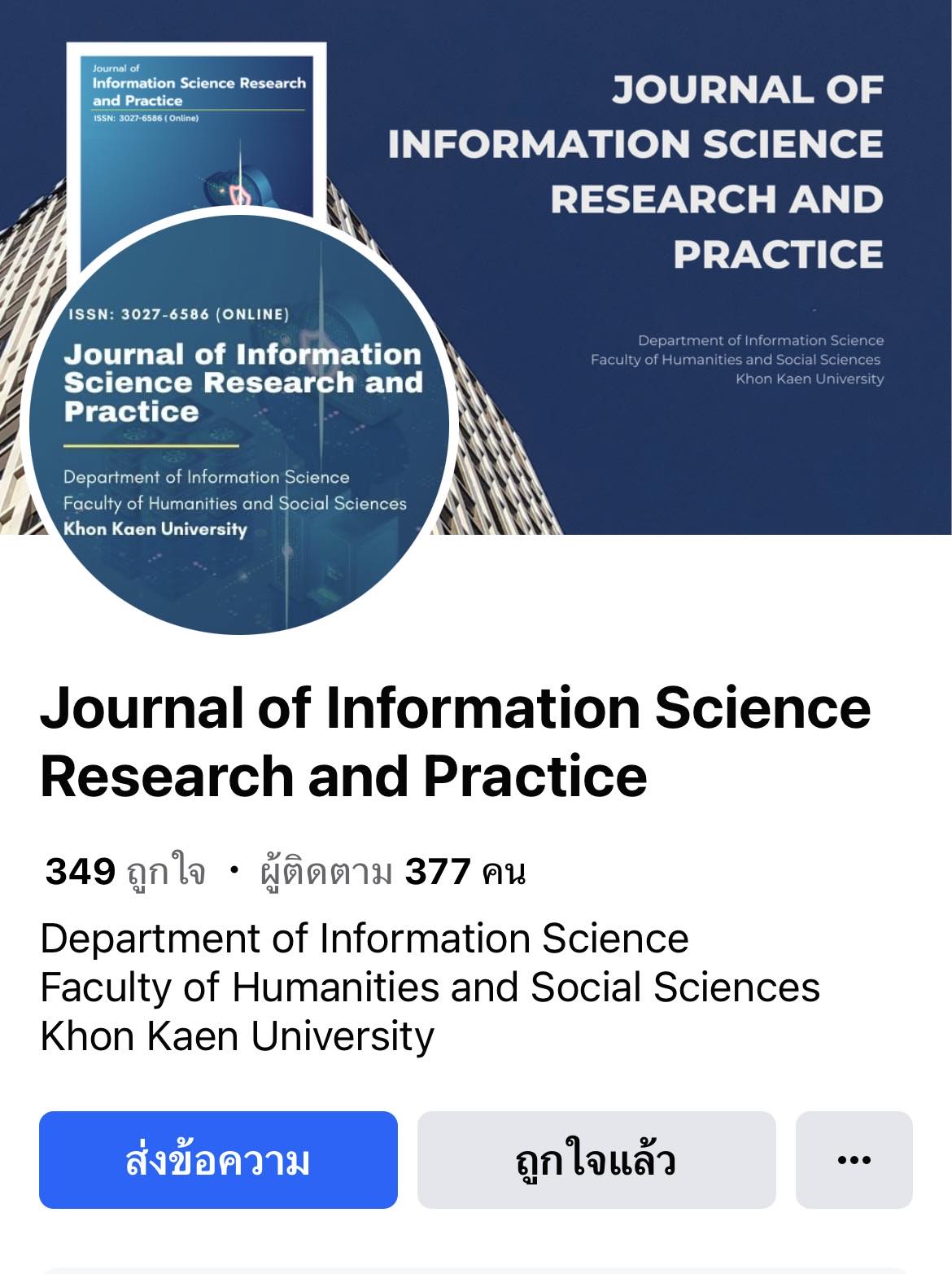Use of Discovery Tools of Libraries in Public Universities in Thailand
DOI:
https://doi.org/10.14456/jiskku.2022.5Keywords:
Discovery tools, Information search, Academic libraryAbstract
Purpose: This research aimed at exploring the use of Discovery tools of the public universities in Thailand.
Methodology: This survey investigation explored the use of Discovery tools from 43 public service librarians responsible for providing users with Discovery tools using questionnaires and percentage as data analysis.
Findings: Most of the public university libraries started using EBSCO Discovery service in 2011 and have currently used the latest version of the service since 2021. The majority of the libraries have complementarily been given the rights to use the tools from Thai Library Information System (ThaiLIS). The respondents participated in the acquisition and selection of the tools based on the tool features and functionality. Most of the librarians made the Discovery program available to the users for accessing needed information from a variety of information sources, such as journal article search, citation export, and use statistic recording. The librarians normally used a one-time search to access a variety of resources. In addition, the librarians encountered the problem of getting a large number of the search results and their incapability to assess users’ satisfaction and needs.
Application of the study: The research results can contribute to the improvement of library services and construction of a guidelines for selecting the Discovery tool programs suitable for each library.
Downloads
References
Allen, N. D. (2015). Utilizing discovery tools for classrooms: How do librarian attitudes on discovery impact tools they teach? Library Hi Tech News, 8-12. Retrieved 7 May 2021, from https://doi.org/10.1108/LHTN-09-2014-0078
Allison, D., & Mering, M. (2018). Use of discovery tools in ARL libraries. Faculty Publications, UNL Li-braries, 366. Retrieved 7 May 2021, from https://digitalcommons.unl.edu/libraryscience/366
Asher, A. D., Duke, L. M., & Wilson, S. (2013). Paths of discovery: Comparing the search effectiveness of EBSCO Discovery Service, Sommon, Google Scholar, and conventional library resources. College & Research Libraries, 74(5), 464-488.
Breeding, M. (2015). The future of library resource discovery. Retrieved 7 May 2021, from https://groups.niso.org/apps/group_public/download.php/14487/future_library_resource_discovery.pdf
Buck, S., & Steffy, C. (2013). Promising practices in instruction of discovery tools. Communications in Information Literacy, 7(1), 66-80.
Chickering, F. W., & Yang, S. Q. (2014). Evaluation and comparison of discovery tools: An update. In-formation Technology and Libraries, 33(2), 5-30.
Dalal, H. A., Kimura, A. K., & Hofmann, M. A. (2015). Searching in the wild: Observing infor-mation-seeking behavior in a discovery tool. Retrieved 7 May 2021, from http://www.ala.org/acrl/sites/ala.org.acrl/files/content/conferences/confsandpreconfs/2015/Dalal_Kimura_Hofmann.pdf
Fagan, J. C., Mandernach, M., Nelson, C. S., Paulo, J. R., & Saunders, G. (2012). Usability test results for a discovery tool in an academic library. Information Technology and Libraries, 31(1), 83-112.
Fawley, N. E., & Krysak, N. (2012). Information literacy opportunities within the discovery tool environment. College & Undergraduate Libraries, 19(2-4), 207-214.
Vaughan, J. (2011a). Chapter 1: Web scale discovery: What and Why? Library Technology Reports, 1, 5-11.
Vaughan, J. (2011b). Chapter 6: Differentiators and a final note. Library Technology Reports, 1, 48-53.
Yang, S. Q, & Wagner, K. (2010). Evaluating and comparing discovery tools: How close are we towards next generation catalog? Library Hi Tech, 28(4), 690-709.








